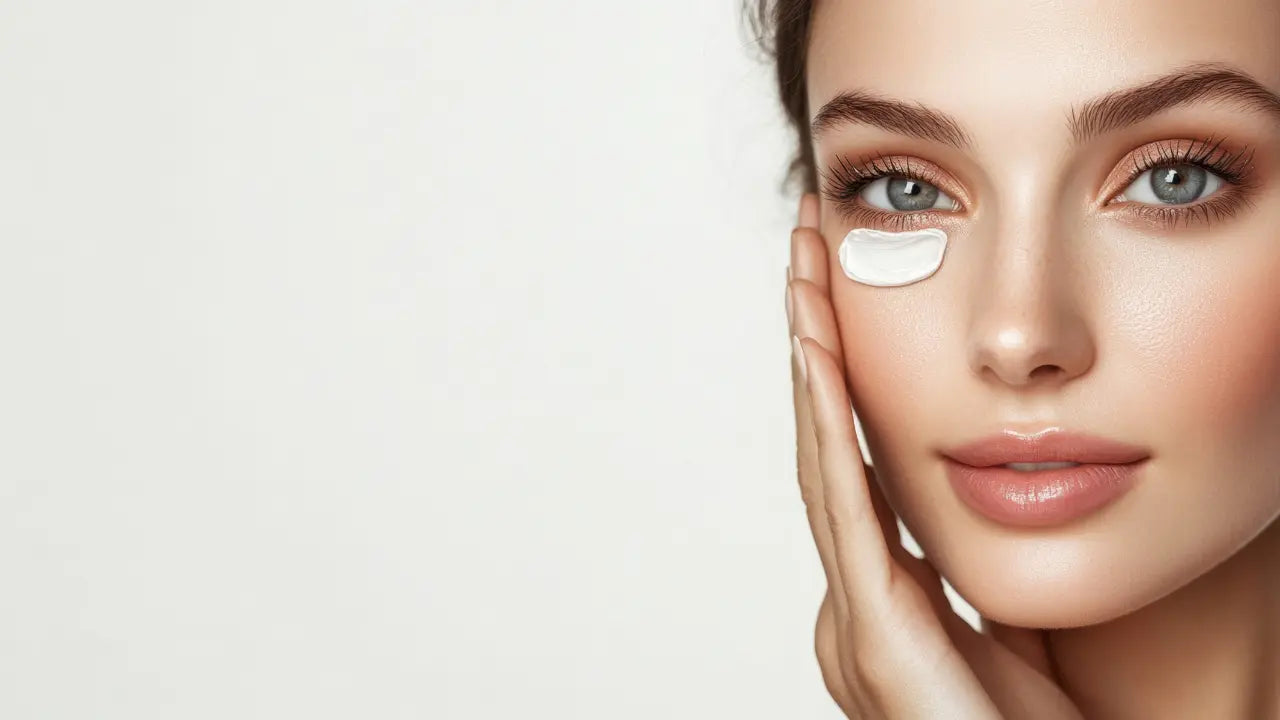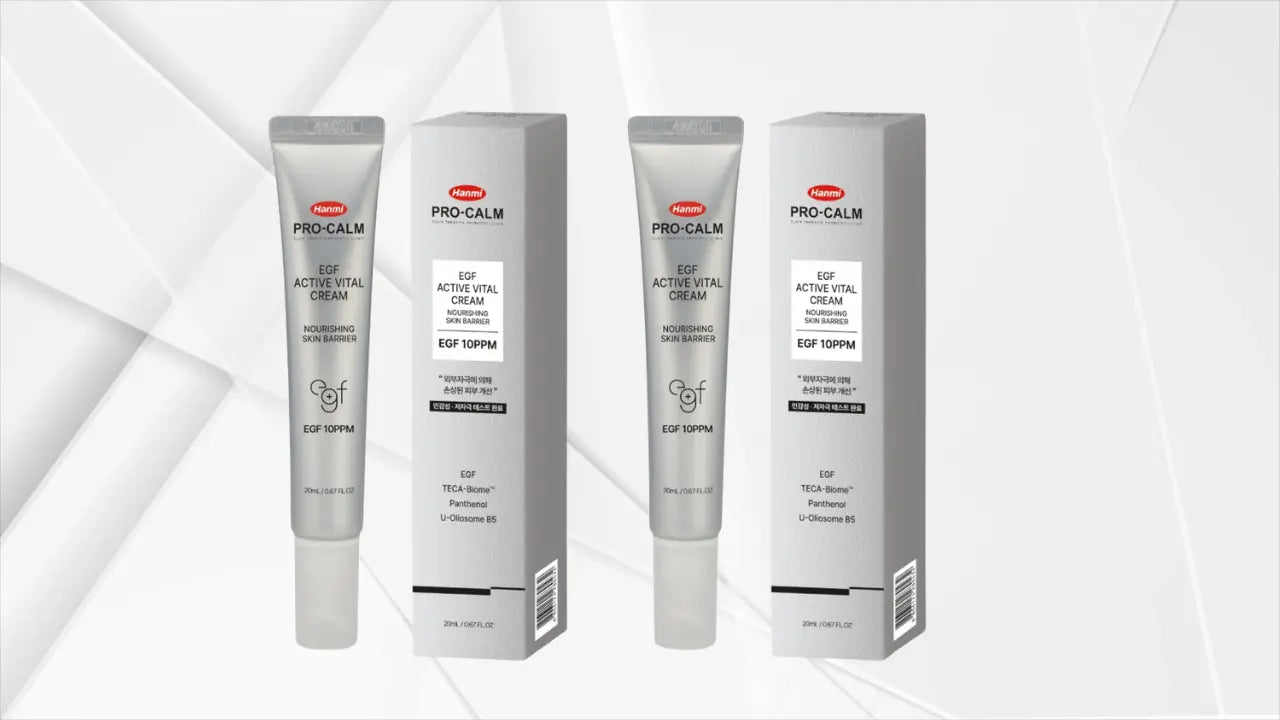Firming eye cream is the phrase most of us type when the skin around our eyes starts to look soft, shadowed, or lined and we want something that helps without stinging or pilling under makeup. In this guide I’ll set realistic expectations for what a firming eye cream can accomplish, explain the ingredients that tend to make a visible difference, and share how I fit these formulas into a routine so they feel comfortable in winter heat, office AC, or humid summers.
What a firming eye cream can and can’t do
A good firming eye cream may reduce the look of fine lines, soften crepiness, and make the area appear smoother and better hydrated, especially when it contains ingredients with published data behind them. Dermatology sources consistently note that retinoids can help the appearance of fine lines when used slowly and with moisturizer; that same go-slow logic applies to the eye area, where skin is thinner and more sensitive. Америкийн арьс судлалын академи
It’s equally important to name what even the best formula cannot do. A topical cream won’t lift a truly drooping eyelid or change bone structure; those are medical or procedural conversations. When shadows and puffiness drive the concern, causes can range from pigmentation and allergic rubbing to fluid retention and natural anatomy. Medical centers describe common, non-serious causes such as sleep issues, heredity, and volume changes, and they suggest simple steps like elevation and cold compresses alongside skincare to reduce the look of puffiness. Cleveland Clinic
Short-term “tight” or “lifted” looks are often about hydration and optical diffusion rather than permanent change. If I want a fast, temporary refresh before a meeting or photo, I’ll chill a set of collagen hydrogel eye patches like the COSRX Pink Peptides Collagen Hydrogel Eye Patch and press them on clean skin for ten minutes. They leave a thin, flexible film that makes concealer glide more evenly, which in turn reads as smoother and a touch firmer.
Key ingredients in firming eye creams and how they work
When I scan an eye-area INCI list, I look for ingredients with published evidence. A recent peer-reviewed review of eye-cream actives highlights niacinamide for brightness and elasticity, caffeine for pigment and puffiness, and vitamins C and E for antioxidant support. That same review notes that well-designed formulas can improve the look of periorbital hyperpigmentation and surface lines over weeks of consistent use rather than days. PMC
Peptides are popular for a reason. A 2023 double-blind randomized trial on crow’s feet found that peptide-containing creams improved wrinkle metrics versus control over several weeks, supporting the idea that specific signal peptides can enhance smoothness when the rest of the routine is gentle and consistent. I notice peptide eye creams tend to have a cushy, primer-like slip that sits nicely under concealer; on me they soften stacking lines without feeling greasy. PMC
Hydration is the quiet hero. Hyaluronic acid attracts and holds water, which can visibly plump fine, dehydrated lines in the short term and help the barrier feel more comfortable over time. In my routine, a small amount of HA under the orbital bone makes most eye creams feel more forgiving, especially in dry indoor air, and it helps pigment-correcting concealers blend without skipping. For that lightweight layer, a hyaluronic acid serum for lightweight hydration such as Torriden DIVE IN serum pairs well under or around the eye area when applied sparingly and not too close to the lash line.
Caffeine shows up in many de-puffing formulas, and it isn’t just marketing. Reviews and small clinicals report that topical caffeine can improve lower-lid puffiness and reduce the look of dark coloration in some people, likely through vasoconstriction and antioxidant effects. I reach for caffeine-forward gels on mornings after salty dinners or late nights; the sensation is cool, and the finish tends to be thin enough for quick makeup. PMC
Retinoids deserve a careful word. Over-the-counter retinol or encapsulated derivatives may help the appearance of fine lines around the eyes with slow ramp-up and buffering. The dermatology advice is consistent: start with a tiny amount on alternate nights, moisturize generously, and stop if stinging persists. I keep retinoids to the bony orbital rim and avoid the immediate lash line unless the formula is specifically designed as an eye product. Америкийн арьс судлалын академи
Peptides, retinoids, and antioxidants
Peptides signal the skin in ways that may support firmness; retinoids encourage cell turnover; antioxidants like vitamin C, vitamin E, and coenzyme Q10 help limit oxidative stress that can accelerate the look of aging. Together, they form the “slow and steady” core of most firming eye formulas. A combination-product trial also suggests multi-active creams can improve several endpoints at once—including fine lines and dark circles—when used twice daily for a month or two, which matches what I’ve seen anecdotally in readers’ routines and my own. onlinelibrary.wiley.com
Hydrators, caffeine, and texture modifiers
Humectants like glycerin and hyaluronic acid pull in water; emollients smooth rough patches; and flexible film-formers give that subtle tightening feel you notice about ten minutes after application. Caffeine sits in this bucket as a fast-acting helper for puffiness and shadow; a comprehensive 2024 review describes topical concentrations up to three percent as safe and notes improvements in color and swelling in small studies. On me, that translates to a more awake look on travel days and less concealer settling. PMC
Types and how to choose by skin feel and concern
Choosing a firming eye cream is easier when you start with texture. If your eye area dries out under heaters or in low humidity, richer creams with ceramides tend to feel the most comfortable and make fine lines look softer by morning. On those nights, I’ll layer a ceramide barrier moisturizer like AESTURA ATOBARRIER365 Cream over my eye cream, keeping both a little away from the lashes to avoid migration.
If you run oily or live in a humid climate, gels and light lotions absorb quickly and reduce the chance of makeup slip. For particularly reactive skin days, I focus on plain soothing formulas and skip strong actives; a cica soothing cream for reactive skin such as Dr.G Red Blemish Cica Soothing Cream can be patted sparingly around, not on, the immediate rim to calm the area while you reset.
Sensitivity deserves a special note because eyelids are a hot spot for contact dermatitis. Dermatology references list eye creams, sunscreens, fragrances, and even nail polish components as common triggers, which is why fragrance-free, simply formulated products tend to be safer bets near the eyes. If you’re prone to rashes or itching, patch test first and avoid essential oils and perfuming agents that are known sensitizers. DermNet®+1
Sensitive or reactive skin
On weeks when my allergies flare, I lean toward bland hydration and keep actives to the rest of the face. A soft, cushiony cream over damp skin gives a smoothing effect without waking up morning redness. If a formula tingles more than a minute or two, I wash it off and revert to moisturizer only for a couple of nights before testing again. That pause keeps me consistent in the long run, which matters more than a single strong night.
Puffiness, dark circles, and fine lines
Puffiness from late nights or salt usually responds to cold tools and caffeine gels; structural under-eye hollows or true lid laxity may need procedural advice to change the shadow. Dark circles can be pigment, thin skin, or both; ingredients like niacinamide and vitamin C can brighten over time when combined with sun protection and gentle habits. Clinical and review data keep pointing to multi-active formulas and patience rather than miracles in a week, which matches how most readers report success. PMC
Who it’s for (and when it isn’t)
Firming eye cream tends to make the biggest difference for people noticing early fine lines, a crêpe-like texture, or morning puffiness that calms by midday. If crow’s feet show up in photos or concealer emphasizes texture, a peptide-rich cream layered over light hydration can be surprisingly smoothing. When my day includes back-to-back meetings, I’ll keep a stick balm for fine lines over makeup such as the KAHI Wrinkle Bounce Multi Balm at my desk to tap over dryness at the outer corners; the sheen diffuses light and keeps eyeliner from cracking.
It isn’t the right tool for everything. If the issue is a noticeably drooping upper lid, a topical won’t “tighten” skin back into place. Allergic eyelid dermatitis, eczema, or ongoing stinging are cues to stop, simplify, and consult a clinician rather than adding more actives. Some people also discover that fragranced products near the eyes cause reliable redness; that’s not a personal failure—just an ingredient list that doesn’t suit your skin. DermNet®+1
How to use and routine pairings safely
I keep the nightly cadence minimal: cleanse, pat dry, apply a pea-sized amount of eye product to the orbital bone, and follow with face moisturizer. On drier nights or when trialing retinoids, I use the “moisturizer sandwich” method—moisturizer, then eye cream, then a thin layer of moisturizer again—to buffer. Dermatology guidance around retinoids emphasizes starting slowly, using moisturizer, and adjusting frequency based on your skin’s reaction, which matters more than what the box says. Америкийн арьс судлалын академи
Morning is when I chase brightness. Instead of stacking strong actives at night, I prefer a gentle routine and let daytime take care of tone. A tranexamic acid brightening serum for mornings like Anua TXA Niacin serum can be used on the face to support a more even look under the eyes; I keep it away from the immediate lash line and rely on concealer for the final tweak.
Safety notes are straightforward but worth repeating. If you’re pregnant or trying to conceive, major obstetric groups advise avoiding retinoids as a precaution, even though over-the-counter absorption is low. That’s an easy switch—lean into niacinamide, vitamin C, hyaluronic acid, and sunscreen while you pause vitamin A derivatives. Whatever your stage of life, sunscreen around the eye area and sunglasses do as much for long-term smoothness as any jar, because UV exposure accelerates the changes most people are trying to soften. ACOG
Night vs morning; makeup compatibility
For makeup days I prefer gel or light lotion textures because they don’t break up concealer. Rich balms read best on no-makeup days or as a last step tapped over makeup for extra slip. In dry office air, a tiny dab of hydrating serum under the outer corners helps concealer flex without settling into crossing lines by noon.
Ingredients to separate and safety notes
I avoid layering strong acids right next to the eyes and separate retinoids from heavy exfoliation. If I wake up with a sandpapery feel, I skip actives for a night and go back to soothing hydration. The result is less drama week to week and more cumulative improvement over a season.
Comparisons & narrative FAQs
Do firming eye creams actually firm? In my experience the most honest answer is that they make the thin skin around the eyes look smoother and better supported, particularly when peptides and retinoids are part of a cautious, moisturizer-heavy plan. A randomized trial on crow’s feet backs that up with measurable improvements, and reviews of eye-area actives point to niacinamide, caffeine, and antioxidants as useful supporting players. That translates to less concealer creasing and a less tired look rather than an instant lift. PMC+1
What should I buy if my eyelids feel slack? If you mean a true droop of the upper lid, no topical will reverse it; that’s anatomy. If you mean a softly folded texture and fine lines, a peptide-forward cream layered over hydrating serum and followed by sunscreen tends to look the most refreshed. For quick mornings, collagen hydrogel eye patches such as the COSRX Pink Peptides Collagen Hydrogel Eye Patch give a temporary smoothing effect you can build makeup on.
Are caffeine eye creams worth it? They can be when puffiness is the target. Evidence suggests caffeine helps reduce the look of swelling and discoloration for some users, and it’s easy to tolerate in low-irritation gel bases. I keep one in the fridge for travel mornings so metal applicators and cool gel share the workload. PMC
Which textures play nicest with makeup? Gels and light lotions that set to a non-greasy finish tend to resist creasing. If concealer still gathers, a tiny amount of a ceramide barrier moisturizer like AESTURA ATOBARRIER365 Cream tapped over dry patches after makeup can smooth the look without lifting coverage.
What if everything burns? Step back to basics, avoid fragrance and essential oils near the eyelids, and patch test before full use. Eyelid skin is a common site of cosmetic allergy and irritation, and dermatology references list eye creams and sunscreens among frequent triggers—so gentler, fragrance-free picks are worth the hunt. DermNet®
A thoughtful firming eye cream can help the eye area look smoother, more hydrated, and a touch tighter when you give it time and keep the rest of your routine simple. Ingredients with the strongest backing—peptides, niacinamide, retinoids, antioxidants, caffeine, and humectants—work best when you match texture to your climate and tolerance. If you start slowly, prioritize comfort, and let sunscreen do its long-game work, the changes add up quietly but convincingly over a season.




